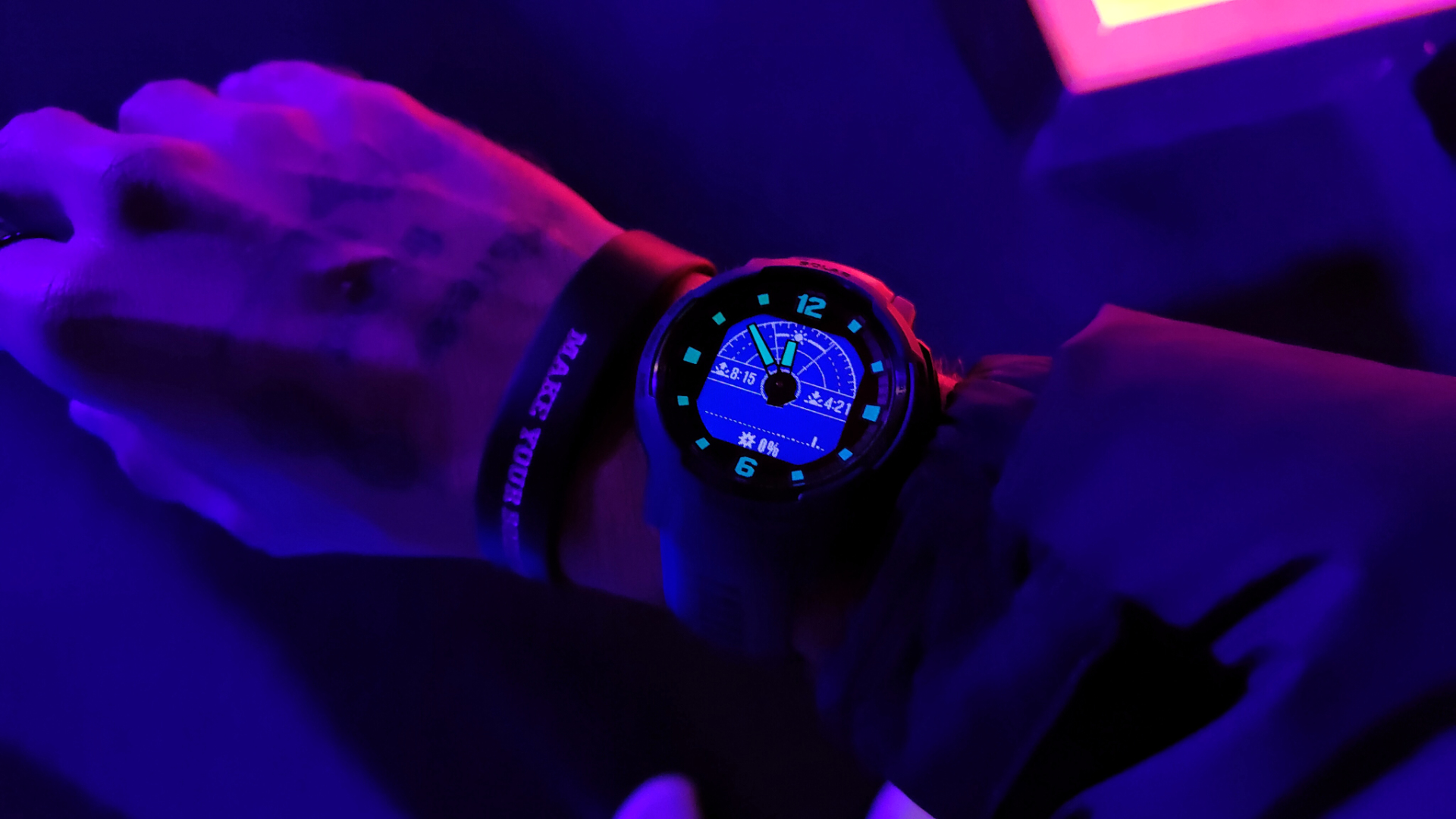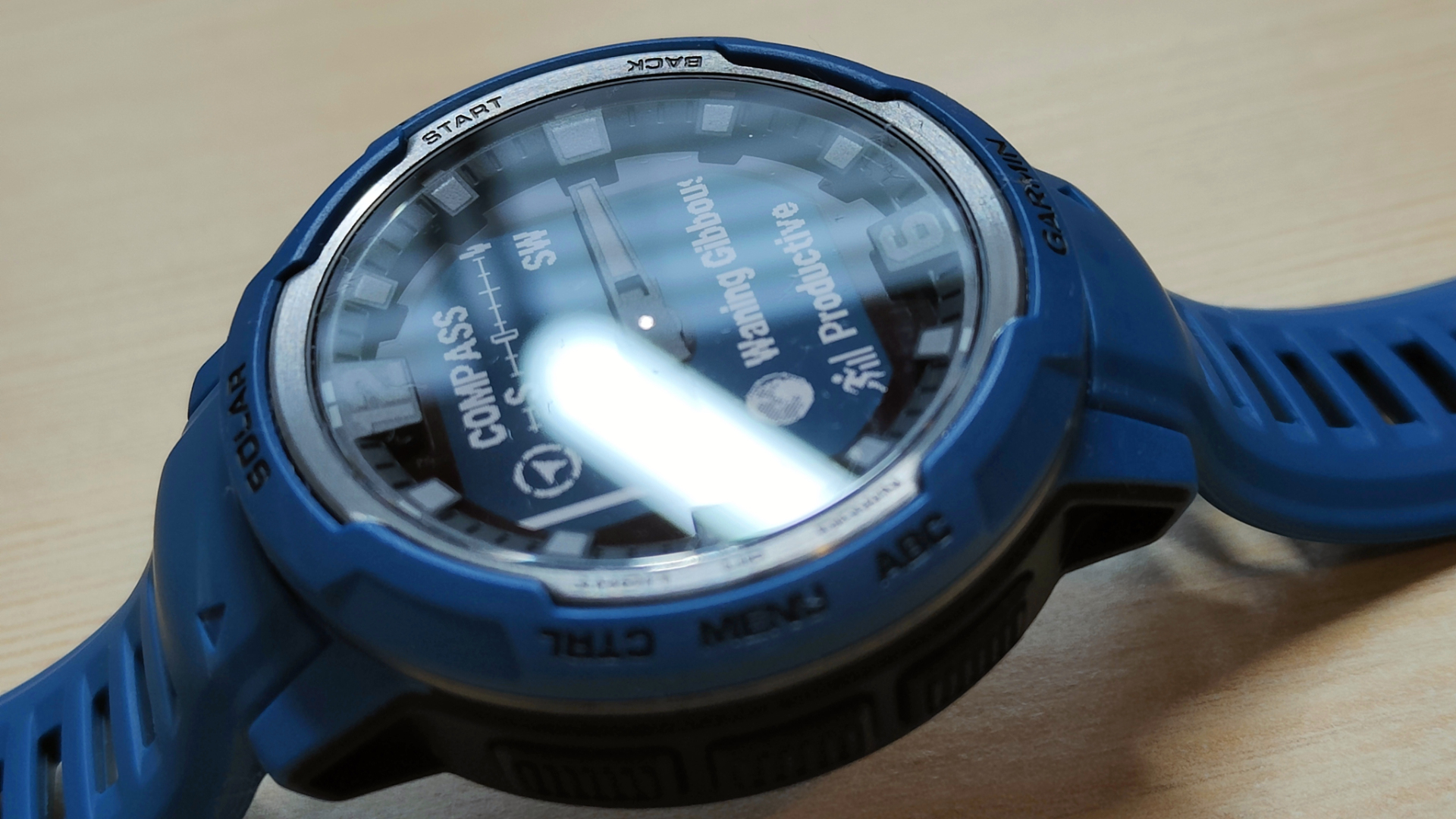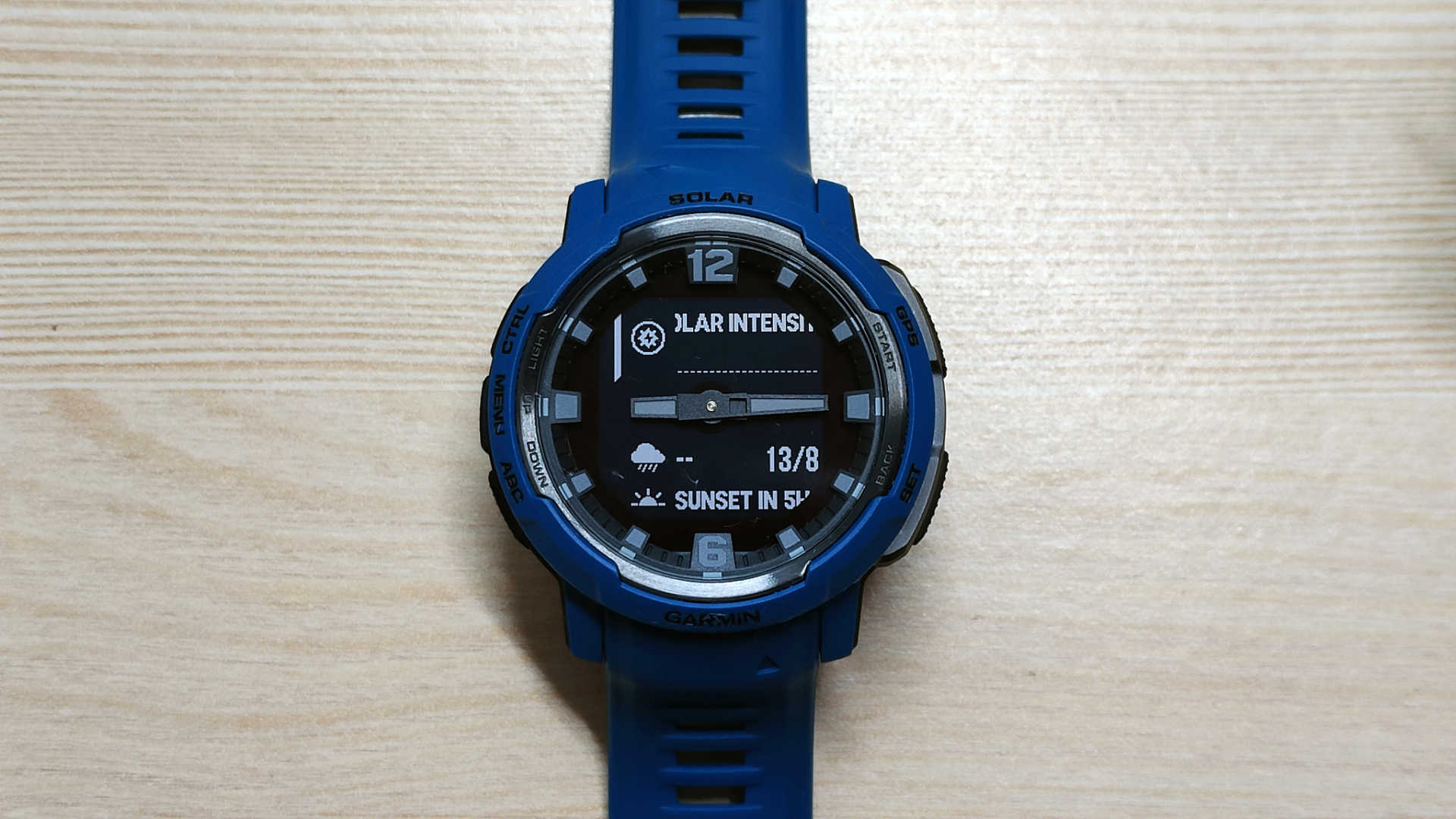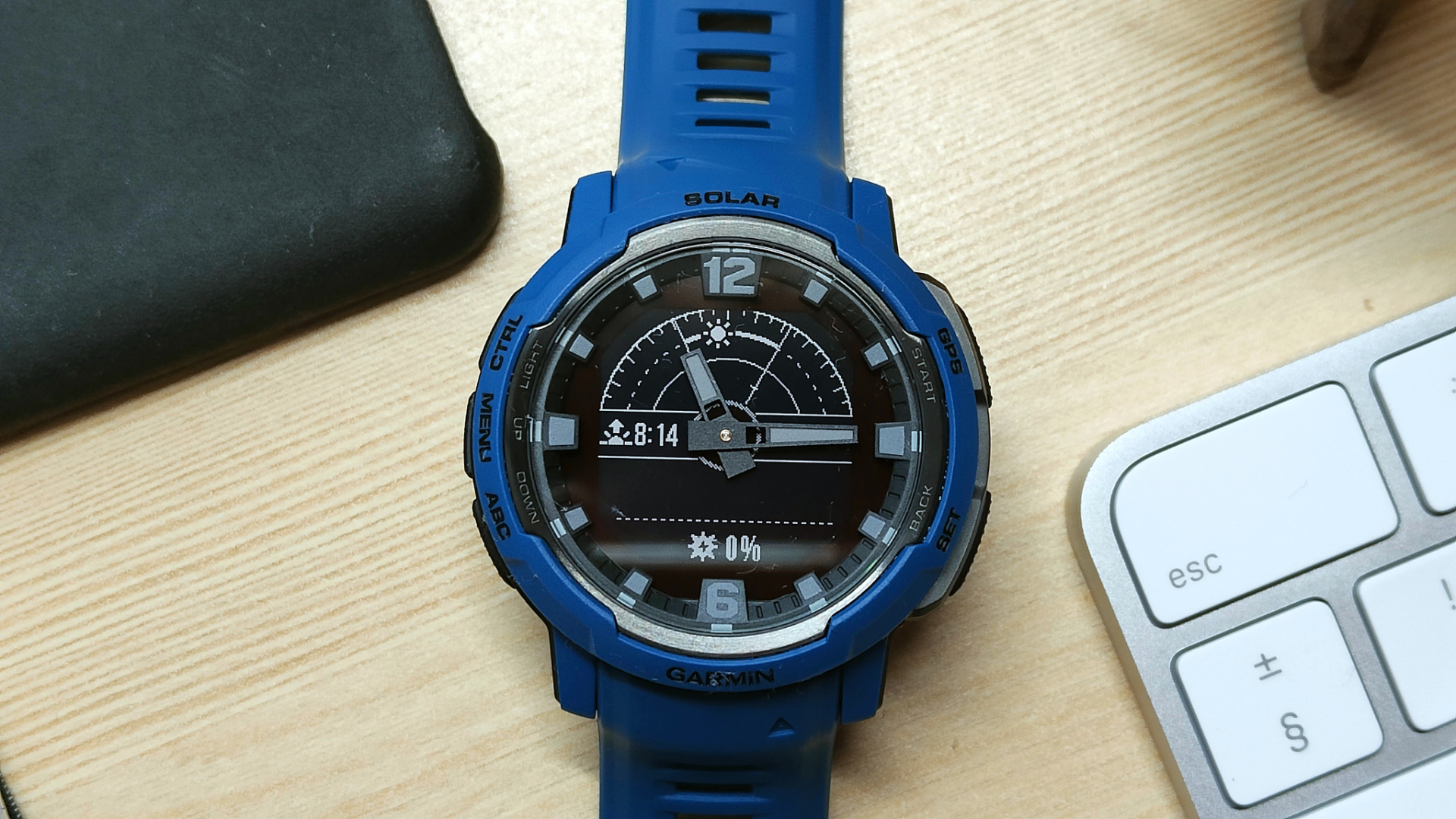Garmin Instinct Crossover Solar review: Rugged outdoor hybrid smartwatch... to whom?
The Instinct Crossover Solar is the quirkiest Garmin watch to date; maybe a bit too quirky for most people.

Garmin never shied away from releasing niche smartwatches, but the Instinct Crossover Solar is the most out-of-the-box Garmin watch to date. In fact, some people, including myself, might question why this watch needs to exist in the first place. It's more expensive than the similar Instinct 2 Solar and offers very few upgrades apart from the analogue hands. For hardcore Garmin watch owners and collectors only.
-
+
Accurate and fast GPS
-
+
Excellent battery life
-
+
Plenty of sports, fitness and health features
-
+
Offers something different in today's saturated smartwatch market
-
-
Too expensive for what it has to offer
-
-
Of all niche Garmin watches, the Instinct Crossover is probably the most niche
-
-
Small MIP display
-
-
Rather bulky design
Why you can trust T3

How do you start a Garmin Instinct Crossover Solar review? I mean, come on. It’s a rugged multisport watch with analogue hands!? The Instinct franchise has always been a sandbox for Garmin (see also: Dezl Edition, Esports Edition, etc.), but the Crossover's hybrid smartwatch approach is really pushing the boat out. Even with so many Garmin watches out there, it won’t be hard to remember this watch, so if it’s the uniqueness you’re after, this is your watch.
A hybrid smartwatch is a smartwatch with analogue features. A good example is the Withings Scanwatch (read my Withings Scanwatch review for more info) – it's pretty and has plenty of smart functionality, such as ECG and heart rate monitoring. With the Instinct Crossover Solar, Garmin puts its own spin on the concept and applies some smart-looking updates to the affordable rugged adventure watch. Is it a good pairing? Well, the latest Instinct iteration is certainly unique.
Is it good enough to be featured on T3's best hybrid watch and best Garmin watch guides? That's a different question altogether. In this Garmin Instinct Crossover Solar review, I'll do my best to explain what this watch is about and who's it for; I'll leave the decision up to you. As you can tell from the star rating, the Instinct Crossover Solar is far from perfect, but it's not without merits. Okay, enough chitty-chat – let's review the watch!
Garmin Instinct Crossover Solar review: Price and availability
The Garmin Instinct Crossover Solar was announced in Nov 2022 and is available to buy now directly from Garmin US, Garmin UK and Garmin AU for a recommended retail of $550/£530/AU$1,050. The non-solar version is available for $500/£480/AU$1,000, so not much cheaper; I'd recommend getting the Solar version, as that has an extended battery life (should you expose the watch to enough sunlight).
For comparison, the Garmin Instinct 2 Solar costs $450/£390/AU$700. It's much cheaper, and from a feature point of view, you only miss out on the illuminated analogue hands and chapter ring. Not the same thing, but you can buy the Withings Scanwatch for $280/£280/AU$500 (bargain). For the best Garmin Instinct Crossover Solar prices, check out the widgets at the top and bottom of this review, or visit T3's best cheap Garmin deals page.
A post shared by Matt Kollat (@pace_max_pro)
A photo posted by on
Garmin Instinct Crossover Solar review: What's new?
From a features point of view, the Garmin Instinct Crossover Solar is identical to the Instinct 2 Solar. The main – or, more like, only – differences are the luminescent analogue hands and chapter ring. The Super-Luminova coated physical elements help read the analogue watch bits of the Instinct Crossover without turning the backlight on (which saves battery power). See the hero image of this review for more info, which was taken at one of the most extreme environments known to man: a glow-in-the-dark indoor mini-golf place.
The analogue hands are overlayed on the Instinct Crossover's digital display and automatically move out of the way when you interact with the watch via the navigation buttons. Of course, some parts of the display will always be covered by the arms, which might be a slight issue for some, considering the small screen (more on this below).
Get all the latest news, reviews, deals and buying guides on gorgeous tech, home and active products from the T3 experts
Another fresh addition is the Revodrive technology. Garmin claims this technology helps the Instinct Crossover "deliver accurate analogue timekeeping even in the harshest activities and environments." If the watch gets hit hard enough to knock the hands out of position by accident, RevoDrive will stabilise them and auto-calibrate them to maintain accuracy.

Garmin Instinct Crossover Solar review: Physical design
The Garmin Instinct Crossover Solar is a rugged smartwatch through and through, built to MIL-STD-810 standards. Now, this certification might feel unsubstantiated from other outdoor watch manufacturers, but Garmin actually works with the US military, so I'm inclined to believe their watches come with thermal and shock resistance and are water-rated to 10 ATM. In fact, most Instinct models are available in what's called the Tactical Edition, which contains night vision goggle compatibility, stealth mode, a kill switch and more. This is specifically so military personnel can use it in combat situations.
Anyhow, the Garmin Instinct Crossover Solar has the familiar 5-button layout, widget views, sensors, etc., we've seen on all Garmin watches in the last 3-4 years. If you've interacted with any watch from this period, you'll be familiar with using the Instinct Crossover immediately. The watch isn't light or slim (the Instinct Crossover Solar weighs 2.3 oz/ 65 g, and the straps are non-removable or exchangeable either.
The 0.9 x 0.9-inch MIP display (176 x 176 pixels resolution) is nothing to write home about, something I didn't particularly appreciate in the Solar 2 Instinct. It's a small, low-resolution display in an era when AMOLED running watches are available for peanuts. Even worse, the arms – no matter how small they might be – cover the screen slightly, making the valuable screen real estate even smaller. I don't mind the monochrome MIP display, but at least make it slightly bigger next time, Garmin, so I can see the stats when I'm hiking or running. Please.

Garmin Instinct Crossover Solar review: Battery life
The Garmin Instinct Crossover Solar has a long battery life, which isn't surprising considering the watch has a small display and a solar charging ring around the screen. On paper, the Instinct Crossover Solar has a 70-day battery life in smartwatch mode with solar charging (28 days without) and a 25-hour GPS battery (31 hours with solar).
Sadly, SatIQ isn't available on the watch yet, although the Instinct Crossover Solar uses only one GPS band at any point, so maybe Garmin deemed it unnecessary to include this feature. There is a battery-saver mode that turns off sensors and dims the backlight in case you forget to charge the watch after three weeks of usage. Interestingly, I managed to discharge the battery almost entirely once during testing and noticed that once activated, the battery-saver mode stays on until you turn it off in the menu. Weird.
I first noticed this when I reviewed the Garmin Forerunner 955 Solar, but Garmin's quoted battery life and actual battery life started to diverge, probably due to all the surplus features. With all the sensors going all the time, including all the calculations the watch has to do to provide you with useless stats such as how much body battery you have left, it's no wonder the battery can't keep up.
I haven't done any scientific tests to measure the battery drain, and maybe it's only due to me using the GPS quite often, but I had to charge the Instinct Crossover Solar twice over the month-long testing period, which feels strange when you read a wearable can potentially go for 70 days without a top-up.

Garmin Instinct Crossover Solar review: Features
Speaking of features: the Garmin Instinct Crossover Solar is packed to the brim with features, which include Sleep Score and Advanced Sleep Monitoring, Body Battery, VO2 Max estimation, Pulse Ox (blood oxygen measurement), Fitness Age calculation, Training Status/Load/Effect, HRV Status (heart rate variability), and Recovery Time. There is also Multi-GNSS support (single band), ABC sensors, TracBack routing (helps users navigate the same route back to their starting point), and Reference Point (helps users keep track of a known place relative to their location).
There isn't any memory for maps, music or anything else; the Instinct Crossover Solar only has 64 MB of internal storage for the bare minimum. I haven't mentioned it, but I hope in 2023, it goes without saying that a Garmin watch has a built-in optical heart rate sensor to measure heart rate 24/7. And since this is an outdoorsy watch, you can check sunrise/sunset times and moon phases on the wrist. Plus, you also have a digital compass at your disposal.

Garmin Instinct Crossover Solar review: Heart rate sensor and GPS accuracy
I'm not going to lament over the heart rate accuracy of the Garmin Insitinct Crossover Solar as it uses the same heart rate sensor and algorithm as all other latest gen Garmin watches – it's more than accurate enough for tracxking everday activities. The First Beat algorithm enjoys moderate effort long-distance activities the most, such as running and cycling, and sometimes smooths out quick spikes in heart rate, thiking it's probably just an anomaly.
As for GPS accuracy, the Instinct Crossover Solar uses a multi-GNSS system but has only a single band chip, so it's it would probably struggle in challenging GPS enviroment a bit more than multi-band watches such as the Garmin Enduro 2. It also lacks SatIQ, which I guess make sense because of the single band chip mentioned just before. That said, in my experience, the watch picked up signal almost instantly after I loaded an outdoor sport profile without a fail.
Looking at the map view in Garmin Connect, I could even detect when I had to go around a larger puddle during one of my morning runs. I've used the watch in an environment with little to no obstruction to the sky, I must admit, but I was impressed with the accurecy of the watch, nevertheless.

Garmin Instinct Crossover Solar review: Verdict
Garmin has too many samey-samey watches, it’s hard to get super excited over small things like illuminated analogue hands. Don’t get me wrong; the Instinct Crossover Solar is more than a capable wearable, but it has the same sensors and features as the Garmin Instinct 2 Solar, a watch that didn't blow me away when I tested it.
Most things I could forgive the Instinct Crossover Solar, but not the price. Garmin watches aren’t cheap, but the Instinct has always been one of the more affordable watches; that’s not the case here. You’ll need to shell out serious monies for the analogue hands, the dial and Revodrive tech – is it worth it?
Even though I enjoyed using the watch, I can’t recommend it unless you’re really, really keen on the analogue hands. There are pretty hybrid watches on the market (Withings Scanwatch) that can measure ECG and track fitness for half the price of the Instinct Crossover Solar. And although the Garmin is more accurate than those, the whole point of hybrid watches is that they appeal to people who don’t like the look of digital watches. Those people won’t like the look of the Instinct Crossover – who’s going to buy it, then?
Garmin Instinct Crossover Solar review: Also consider
I referenced this watch in this review already, and I'll do it again: if you're after a pretty hybrid smartwatch, you should check out the Withings Scanwatch. It comes jam-packed with health sensors and features that cater to modern smartwatch owners' needs. It's by no means a perfect health wearable, but at least it can provide some exciting insights into sleep and heart health in general. Read my full Withings Scanwatch review.
Funnily enough, you don't have to pay loads more for a Garmin Fenix 6x Pro Solar nowadays. The Solar version of one of the best outdoor watches added solar-boost to the already potent feature-set of the 6x. It's rugged, it's pretty and it's Garmin – I'd probably choose this over the Instinct Crossover Solar if I were you. Read Mark's full Garmin Fenix 6x Pro Solar review.
For a cheaper alternative, check out the Amazfit T-Rex 2. It's a significant improvement over the T-Rex Pro, as it has a larger display, longer battery life and better GPS chip. Sensor accuracy could be better, and the watch feels bulky for its sake, but if you're on a tight budget, the T-Rex 2 is still worth considering as your next outdoor watch. Read my full Amazfit T-Rex 2 review.

Matt Kollat is a journalist and content creator who works for T3.com and its magazine counterpart as an Active Editor. His areas of expertise include wearables, drones, fitness equipment, nutrition and outdoor gear. He joined T3 in 2019. His byline appears in several publications, including Techradar and Fit&Well, and more. Matt also collaborated with other content creators (e.g. Garage Gym Reviews) and judged many awards, such as the European Specialist Sports Nutrition Alliance's ESSNawards. When he isn't working out, running or cycling, you'll find him roaming the countryside and trying out new podcasting and content creation equipment.